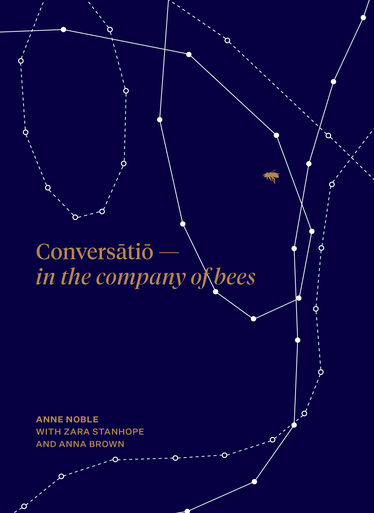Conversātiō-in the company of bees by Anne Noble, Zara Stanhope and Anna Brown
- NZ Booklovers

- Sep 23, 2021
- 3 min read

This beautifully crafted book, a collaboration between photographer Anne Noble, curator Zara Stanhope and designer Anna Brown, celebrates the work of Anne Noble. For over a decade this acclaimed New Zealand photographer’s creative focus has been on bees, their beauty, complexity and importance to the health and wellbeing of our ecosysems.
Her fascination with bees was sparked when she installed a hive at the bottom of her garden and became a beekeeper. She spent hours looking intently at the bees and learning how the hive functioned. This inspired her to embark on a series of projects in which she has collaborated with experts from different knowledge fields. Conversātiō brings what they achieved together.
The book took its name from Conversātiō, a cabinet of wonder, which was part of a multi-part project created in 2018 for the 9th Asia Pacific Triennial of Contemporary Art (APT9). When the doors of this living photograph were opened several times a day, visitors to the Queensland Art Gallery could see a functioning beehive, a magical experience.
I was drawn to read Conversātiō because of my interest in photography and was delighted to find many images have been included from The Dead bee photographs, Bees’ wings, and A cabinet of wonder.
The multiplicity of her image making techniques, including tin types, photograms and scanning electron microscopes are fascinating. For her ethereal bee wing photograms (plucked from the wings of a colony of poisoned dead bees) she exposed the film by letting the light reach through the gaps in her fingers.
Her images of dead bees are strangely beautiful and evoke feelings of sadness about how these delicate creatures have been exposed to pests, chemicals, and disease. Unless humans stop degrading the environment we may face a future without bees.
In an essay called “Reading the Bees” Anne Noble and Victoria Coldham-Fussell take a deep dive into what humans have written about bees over time and in different cultures going as far back as Xenophon of Athens (430-354 BCE). The belief that the queen bee was a King not a Queen persisted well into the 17th century. Shakespeare believed it. Bees also inspired poets Sylvia Plath and Emily Dickinson.
Those who are curious about science will enjoy the essay contributed by Srini Srinivasan, an expert on bee vison and navigation systems. He designed the Perspex tunnel through which the hive could fly in and out of Conversātiō, the cabinet of wonder. His account of bee experiments conducted in his own laboratory indicate that 'Clearly these creatures possess visual, navigational and cognitive capacities par excellence despite possessing a tiny brain that weighs about a milligram and carries fewer neurons than we do.'
As an art teacher I found the last essay, by Mark Amery inspirational. He tells how Anne Noble collaborated with educationalist Professor Tracy Riley to design and trial The Apiscope Buzz project (a STEAM approach to learning in which arts are added to science, technology, engineering, and mathematics).
An apiscope (observation hive) was placed in two Intermediate School classrooms, so students could observe a hive first-hand. A beekeeper visited to grow their knowledge of how a hive functions. At Avalon Intermediate, musicians, composers, a film and music video maker and a visual artist came into the classroom. At Newlands Intermediate a novelist and a children’s book illustrator took part. These creatives assisted the students to express what they learnt about bees through the arts. Some wonderful work was produced and shared with the wider community.
Anne Noble has written:
‘I hope the book might be a delight to hold, to read and to look at. Also, that it might amplify the readers’ sense of the beauty of bees and their importance to the health and wellbeing of our ecosystems.'
I think that Conversātiō delivers all she hoped for, and more, and would heartily recommend it.
Reviewer: Lyn Potter
Massey University Press



